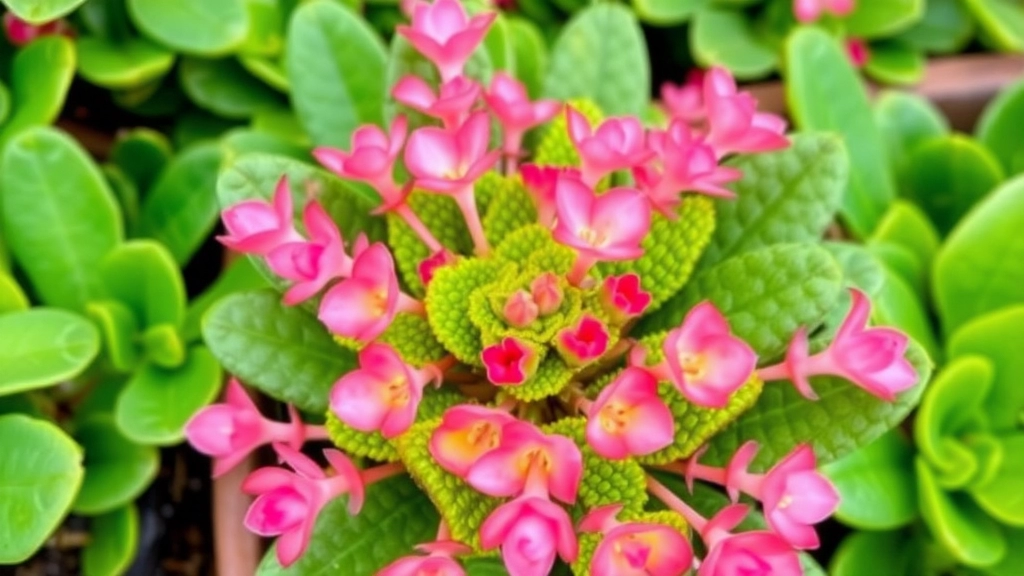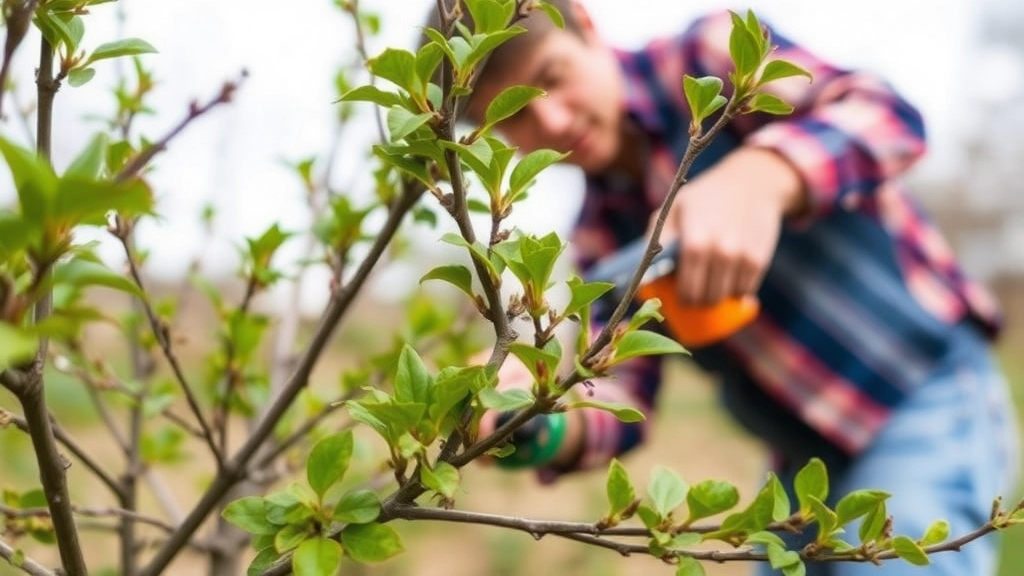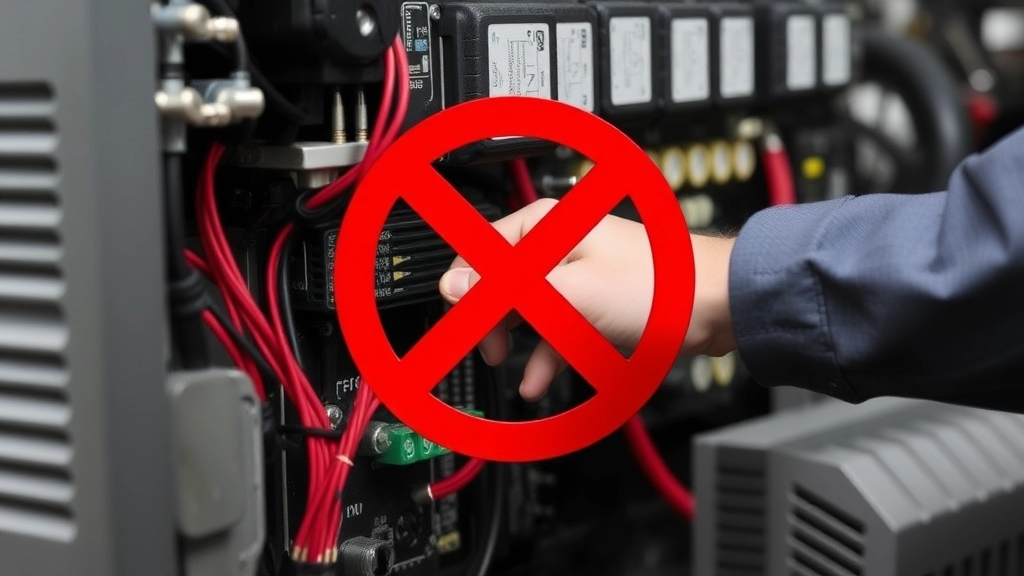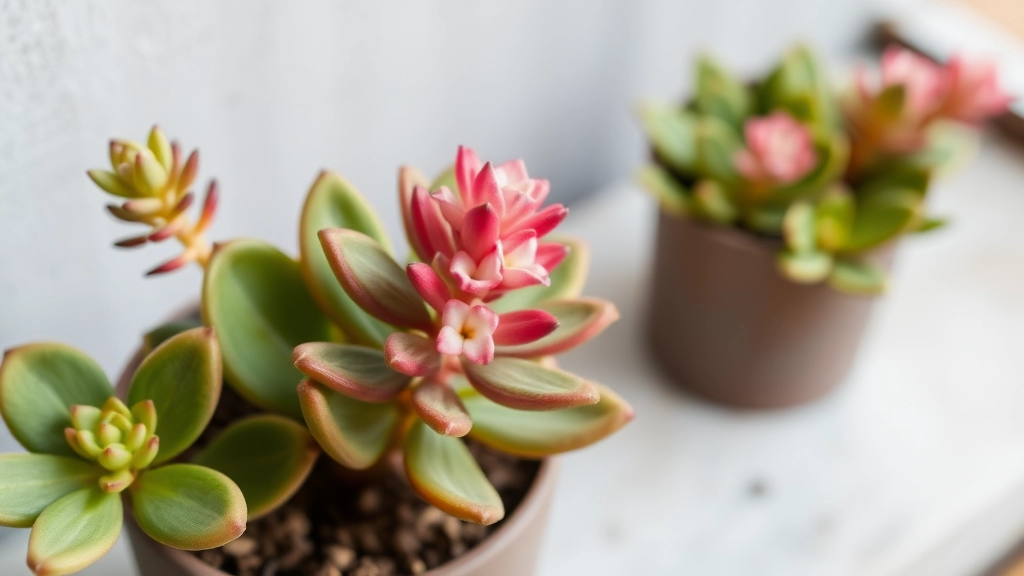Kalanchoe Pinnata: The Miracle Leaf
As an avid plant enthusiast, I’m excited to share my insights on the fascinating Kalanchoe pinnata, also known as the “life plant” or “miracle leaf.” This resilient succulent, native to Madagascar but now thriving worldwide, has captured my attention with its unique ability to sprout new plants from its thick, fleshy leaves. But there’s more to this plant than meets the eye – it’s not just a pretty face in your garden or home.
In this article, we’ll explore the ideal growing conditions for Kalanchoe pinnata, delve into planting and propagation techniques, and discuss its watering and fertilizing requirements. We’ll also cover common pests and diseases, share pruning and maintenance tips, and highlight the numerous benefits and uses of this remarkable plant. Whether you’re a seasoned gardener or a curious beginner, you’ll find valuable information to help your Kalanchoe pinnata thrive and potentially discover why it’s earned its “miracle leaf” moniker.
Overview of Kalanchoe Pinnata
Ever heard of the “life plant” or “miracle leaf”? That’s Kalanchoe pinnata for you.
This succulent’s a real survivor, native to Madagascar but now chilling worldwide.
It’s got these thick, fleshy leaves that can sprout new plants. Pretty wild, right?
Kalanchoe pinnata’s not just a pretty face – it’s been used in traditional medicine for ages.
People swear by it for all sorts of things, from healing wounds to easing inflammation.
But let’s not get ahead of ourselves – we’ll dive into that good stuff later.
What’s cool about this plant is how easy it is to grow. It’s like the low-maintenance friend of the plant world.
You don’t need a green thumb to keep it happy. Just some basics, and you’re good to go.
It can handle a bit of neglect, which is perfect for busy folks or forgetful gardeners (no judgment here).
Kalanchoe pinnata’s got these cute little flowers too, but it’s the leaves that steal the show.
They’re glossy, paddle-shaped, and can grow pretty big – up to 6 inches long.
And get this – the edges of the leaves can sprout tiny plantlets. It’s like nature’s own cloning machine.
So, whether you’re into plants for looks, for health, or just for fun, Kalanchoe pinnata’s got something for everyone.
It’s a tough little plant with a lot to offer. No wonder it’s called the “miracle leaf”, eh?
Ideal Growing Conditions for Kalanchoe Pinnata

Alright, let’s chat about getting your Kalanchoe pinnata to thrive like it’s on a tropical vacation. Trust me, I’ve been there – trying to figure out why my plant looks more like a sad cactus than the lush, vibrant beauty it’s meant to be. So, here’s the lowdown on what these succulents really want:
Light and Temperature: The Sweet Spot
- Bright, indirect sunlight is the name of the game
- Can handle some direct sun, but not too much (think morning rays)
- Ideal temp range: 60-85°F (15-29°C)
- Not a fan of freezing temps – keep it cosy!
Soil and Drainage: Don’t Let It Get Soggy Feet
- Well-draining soil is crucial for Kalanchoe blossfeldiana (mix in some perlite or sand)
- Pot with drainage holes is a must
- Likes it slightly on the dry side
Humidity: Not Too Fussy
- Adapts to average indoor humidity
- Can handle dry air like a champ
Location: Finding the Perfect Spot
- Indoor windowsills facing east or west are prime real estate
- Outdoors? Partial shade is the way to go
Here’s the thing: Kalanchoe pinnata isn’t some diva plant that’ll throw a fit if conditions aren’t perfect. But give it what it likes, and you’ll be rewarded with a plant that’s not just surviving, but thriving.
Remember, it’s all about balance. Too much sun? Leaves might scorch. Too little light? You’ll end up with a leggy, stretched-out plant that’s begging for some rays. And don’t even get me started on overwatering – that’s a one-way ticket to root rot city.
So, keep an eye on your Kalanchoe pinnata, adjust as needed, and you’ll be golden. It’s like any relationship – a bit of attention goes a long way. Now, go forth and create that perfect plant paradise! If you’re interested in other varieties, check out the yellow Kalanchoe blossfeldiana for a splash of sunny color.
Planting and Propagation Techniques
Alright, let’s dive into planting and propagating Kalanchoe pinnata. This is where the real fun begins!
Planting Kalanchoe Pinnata
Ever wondered how to get started with this cool succulent? It’s easier than you think.
Soil matters:
- Go for well-draining soil
- Mix in some perlite or sand
- Avoid heavy, water-retaining soils
Container choice:
- Pick a pot with drainage holes
- Terracotta works great
- Size? Just a bit bigger than the root ball
Planting steps:
- Fill pot halfway with soil mix
- Place plant, add more soil around it
- Firm gently, don’t compact too much
- Water lightly
Propagation Techniques
Now, let’s talk about making more of these beauties.
Leaf cuttings:
- Snip a healthy leaf
- Let it callous for a day or two
- Stick it in moist soil
- Wait for roots and new growth
Stem cuttings:
- Cut a 4-6 inch stem piece
- Remove lower leaves
- Let it dry for a day
- Plant in moist soil
- Keep warm and slightly humid
Division:
- Gently separate offshoots from the main plant
- Ensure each has roots
- Pot up individually
Pro tip: Spring or early summer is prime time for propagation.
Remember, patience is key. Kalanchoe pinnata isn’t in a rush, so why should you be?
Got any propagation tricks up your sleeve? I’d love to hear ’em!
Watering and Fertilizing Requirements

Let’s talk about keeping your Kalanchoe pinnata happy and thriving. I’ve learned a thing or two about watering and feeding these beauties, and I’m excited to share my insights with you.
Watering: The Goldilocks Approach
Kalanchoe pinnata is a succulent, which means it’s a pro at storing water. But here’s the kicker – it doesn’t like to sit in soggy soil. So, how do we strike that perfect balance?
- Water deeply but infrequently
- Let the soil dry out between waterings
- Check the top inch of soil – if it’s dry, it’s time to water
- Reduce watering in winter when growth slows down
Pro tip: If you’re unsure, it’s better to underwater than overwater. These plants are tough cookies and can bounce back from drought easier than root rot.
Fertilizing: Less is More
Now, when it comes to feeding your Kalanchoe pinnata, remember this: they’re not big eaters. Here’s my simple approach:
- Use a balanced, water-soluble fertilizer
- Feed once a month during the growing season (spring and summer)
- Dilute the fertilizer to half-strength
- Skip fertilizing in autumn and winter
Here’s a question I often get: “Can I use organic fertilizers?” Absolutely! Compost or well-rotted manure works great. Just sprinkle a thin layer on top of the soil in spring.
Common Watering Mistakes to Avoid
- Overwatering: This is the number one killer of Kalanchoe pinnata. If leaves start turning yellow or mushy, ease up on the water.
- Using cold water: These plants prefer room temperature water. Cold water can shock the roots.
- Watering the leaves: Aim for the soil, not the foliage. Wet leaves can lead to fungal issues.
Remember, Kalanchoe pinnata is a resilient plant that can handle a bit of neglect. In fact, it often thrives on it! So don’t stress too much about perfect care. Just keep an eye on your plant, and it’ll let you know what it needs.
By following these watering and fertilizing tips, you’ll be well on your way to growing a healthy, vibrant Kalanchoe pinnata. Trust me, once you get the hang of it, it’s a breeze!
Common Pests and Diseases
Let’s chat about the baddies that might mess with your Kalanchoe pinnata.
These tough plants are pretty chill, but they’re not invincible.
Here’s what you need to watch out for:
Pests:
- Mealybugs: These little cotton-ball lookalikes love to party on your plant
- Spider mites: Tiny troublemakers that can cause big damage
- Aphids: Green, sap-sucking nuisances that multiply like crazy
Diseases:
- Root rot: Too much water can make your plant’s roots go mushy
- Powdery mildew: Looks like someone dusted your plant with flour
- Leaf spot: Brown or black spots that make your plant look poorly
How to keep your Kalanchoe pinnata healthy:
- Check your plant regularly – catch problems early
- Don’t overwater – these guys like it dry
- Give them plenty of air – good circulation is key
- Keep things clean – wipe those leaves now and then
If you spot trouble, don’t panic. Most issues are fixable with a bit of TLC.
Remember, prevention is better than cure. Keep your Kalanchoe pinnata happy, and it’ll be less likely to attract pests or diseases.
Got questions about your plant’s health? Hit me up in the comments!
Pruning and Maintenance Tips

Let’s chat about keeping your Kalanchoe pinnata looking sharp, shall we? I’ve learned a thing or two about pruning these beauties, and I’m excited to share some no-nonsense tips with you.
First things first: why bother pruning?
- Keeps your plant compact and bushy
- Encourages more blooms
- Prevents it from getting leggy and sad-looking
Now, here’s the deal with pruning Kalanchoe pinnata:
1. Timing is key
Spring’s your best bet for a good pruning session. That’s when your plant’s gearing up for growth, so it’ll bounce back like a champ.
2. Tools of the trade
Grab some clean, sharp scissors or pruning shears. We’re not hacking away here â we want clean cuts.
3. The chop
Cut just above a leaf node (that’s where leaves meet the stem). This encourages new growth and branching.
4. How much to take off?
Don’t go crazy. Aim for removing about 1/3 of the plant’s height. More than that, and you might stress it out.
5. Deadheading
Snip off those spent flowers. It keeps things tidy and encourages more blooms.
Maintenance beyond pruning:
- Dust those leaves: A quick wipe with a damp cloth keeps them breathing easy.
- Rotate regularly: Give all sides a chance at the sun for even growth.
- Check for pests: Catch those buggers early before they throw a party on your plant.
Remember, Kalanchoe pinnata is pretty chill. It doesn’t need constant fussing. But a little TLC goes a long way in keeping it happy and healthy.
Got any pruning horror stories? We’ve all been there. The key is to start small and get a feel for how your plant responds. Before you know it, you’ll be pruning like a pro.
So, grab those shears and give your Kalanchoe pinnata a little haircut. Trust me, it’ll thank you with lush growth and plenty of blooms.
Benefits and Uses of Kalanchoe Pinnata
Ever wondered why Kalanchoe pinnata is such a big deal? Let’s dive in.
This plant’s not just a pretty face – it’s a powerhouse of benefits.
First off, it’s a natural air purifier. Breathe easy, folks!
But wait, there’s more. It’s got some serious medicinal chops too.
Traditional healers have been using it for ages. Why? It’s packed with good stuff.
Think anti-inflammatory, antimicrobial, and even anti-cancer properties. Impressive, right?
In some cultures, they use the leaves to treat wounds. Nature’s plaster, if you will.
And for the green thumbs out there, it’s a dream to grow. Low maintenance, high reward.
But here’s the kicker – it’s also edible. Yep, you can munch on those leaves.
Some folks add them to salads for a tangy kick. Spice up your lunch game!
Now, don’t go overboard. Moderation’s key, as with anything.
For the DIY crowd, it’s great for propagation. Share the love with your plant pals.
And let’s not forget its ornamental value. It’s a stunner in any garden or indoor space.
So, whether you’re into health, gardening, or just want something nice to look at, Kalanchoe pinnata’s got you covered.
It’s a jack-of-all-trades in the plant world. And that’s why Kalanchoe pinnata is worth your attention.
Troubleshooting Common Issues

Let’s face it, even the toughest plants can throw us curveballs. Kalanchoe pinnata is no exception. I’ve seen my fair share of challenges with this hardy succulent, and I’m here to share some no-nonsense solutions to keep your plant thriving.
Yellow Leaves: What’s the Deal?
Ever walked up to your Kalanchoe and thought, “Why’s it looking a bit yellow?” Here’s the scoop:
- Overwatering: The most common culprit. These succulents hate wet feet.
- Nutrient deficiency: Sometimes, they’re just hungry.
- Too much sun: Yep, even sun-lovers can get a nasty burn.
Fix: Ease up on the watering, feed it a balanced fertiliser, or move it to a spot with bright, indirect light.
Leggy Growth: Stretching for the Stars?
If your Kalanchoe’s looking like it’s reaching for the sky, it’s probably not getting enough light. Here’s what to do:
- Move it closer to a window
- Rotate the pot regularly
- Consider using grow lights if you’re in a dimly lit space
Leaf Drop: The Naked Plant Syndrome
Leaves falling off like it’s autumn? Don’t panic. It could be:
- Temperature stress
- Drastic changes in environment
- Underwatering (yes, it happens)
Solution: Stabilise its environment, check your watering routine, and give it time to adjust.
Pest Invasion: Uninvited Guests
Mealybugs, spider mites, and aphids love to crash the party. If you spot these tiny troublemakers:
- Isolate the plant to prevent spread
- Wipe leaves with a damp cloth
- Use neem oil or insecticidal soap for persistent cases
Root Rot: The Silent Killer
This is the big one, folks. If your Kalanchoe’s leaves are looking wilted despite proper care, it might be root rot. Here’s the game plan:
- Unpot the plant
- Trim away any mushy, black roots
- Repot in fresh, well-draining soil
- Adjust your watering habits
Remember, prevention is better than cure. Most Kalanchoe pinnata issues stem from overcare rather than neglect. So, when in doubt, do less. These plants are tough cookies â they can handle it.
Got any Kalanchoe troubles I didn’t cover? Drop me a line. I’m always up for a good plant puzzle. After all, troubleshooting these common issues is part of the fun of growing Kalanchoe pinnata. It’s all about learning and adapting, just like the Kalanchoe blossfeldiana succulent itself.
Seasonal Care and Management: Keeping Your Kalanchoe Pinnata Happy Year-Round
Ever wondered how to keep your Kalanchoe pinnata thriving through the seasons? Let’s break it down.
Spring: Wake-Up Call
- Time to shake off the winter blues
- Gradually increase watering as growth picks up
- Start fertilizing with a balanced, water-soluble feed
- Perfect time for propagation if you’re feeling adventurous
Summer: Sun’s Out, Fun’s Out
- Move to a spot with bright, indirect light
- Water more frequently, but don’t go overboard
- Watch for pests – they love the warm weather too
- Prune if your plant’s getting a bit wild
Autumn: Slow and Steady
- Ease up on watering as growth slows
- Stop fertilizing – your plant’s prepping for a nap
- Bring indoors if you’ve had it outside
- Keep an eye out for any stragglers trying to bloom
Winter: Chill Time
- Minimal watering – once every 2-3 weeks should do
- No fertilizer needed – it’s rest time
- Protect from cold drafts and heating vents
- Enjoy the occasional winter bloom if you’re lucky
Remember, Kalanchoe pinnata is pretty chill. It doesn’t need constant fussing.
Just adjust your care routine with the seasons, and you’ll have a happy plant all year round.
Companion Plants for Kalanchoe Pinnata
Let’s chat about some plant buddies for your Kalanchoe Pinnata, shall we? I’ve been playing around with different combos, and I’ve got to say, it’s been a blast finding the perfect matches.
First off, why bother with companion plants? Well, it’s not just about making your garden look pretty (though that’s a nice bonus). The right companions can actually help your Kalanchoe thrive. They can attract pollinators, deter pests, or just create a micro-environment that’s perfect for both plants.
Here are some winners I’ve found:
- Succulents: These are no-brainer buddies. They love similar conditions and look great together. Try Echeveria or Sedum.
- Herbs: Rosemary and thyme are tough little guys that can handle the same dry conditions as Kalanchoe.
- Cacti: Another drought-tolerant option that complements Kalanchoe’s look.
- Aloe Vera: This one’s a double whammy – it looks good and has medicinal properties like Kalanchoe.
But here’s the kicker – you’ve got to make sure these companions don’t hog all the water. Kalanchoe Pinnata likes it dry, remember?
I once made the mistake of planting my Kalanchoe with some water-hungry ferns. Big mistake. The poor Kalanchoe was drowning while the ferns were living it up. Learn from my fail, folks.
When you’re picking companions, think about height too. You don’t want taller plants shading out your Kalanchoe. It’s all about that sun, baby.
And here’s a pro tip: try planting your Kalanchoe Pinnata in a mixed succulent garden. It’s low maintenance, looks amazing, and all the plants have similar needs. Win-win-win.
Remember, the key to successful companion planting with Kalanchoe Pinnata is choosing plants with similar water and light requirements. Get that right, and you’re golden.
So go on, get creative with your Kalanchoe companions. Your garden (and your Kalanchoe) will thank you for it.
FAQs about Kalanchoe Pinnata
1. How often should I water my Kalanchoe pinnata?
Water your Kalanchoe pinnata when the top inch of soil feels dry. This typically means watering once every 1-2 weeks, but adjust based on your specific environment. Remember, it’s better to underwater than overwater these succulents.
2. Can Kalanchoe pinnata be grown indoors?
Absolutely! Kalanchoe pinnata thrives indoors when placed near a bright window. It’s an excellent choice for indoor gardeners due to its low maintenance requirements and air-purifying qualities.
3. Is Kalanchoe pinnata toxic to pets?
While Kalanchoe pinnata has medicinal properties for humans, it can be toxic to pets if ingested in large quantities. It’s best to keep this plant out of reach of curious pets.
4. How do I propagate Kalanchoe pinnata?
Propagation is easy! You can propagate from leaf cuttings or stem cuttings. Simply let the cutting callous over for a day or two, then plant it in well-draining soil. Roots should develop within a few weeks.
5. Why are my Kalanchoe pinnata’s leaves turning yellow?
Yellow leaves often indicate overwatering. Ensure your plant has well-draining soil and only water when the top inch of soil is dry. If the problem persists, check for signs of pest infestation or nutrient deficiency.
6. Does Kalanchoe pinnata flower?
Yes, Kalanchoe pinnata can produce small, bell-shaped flowers. However, it’s primarily grown for its interesting foliage rather than its blooms.
7. How big does Kalanchoe pinnata grow?
In ideal conditions, Kalanchoe pinnata can grow up to 3-4 feet tall. However, when grown indoors, it typically stays smaller, around 1-2 feet in height.
8. Can I eat Kalanchoe pinnata leaves?
While some cultures use Kalanchoe pinnata leaves in traditional medicine or as a food ingredient, it’s important to consult with a healthcare professional before consuming any part of the plant.

